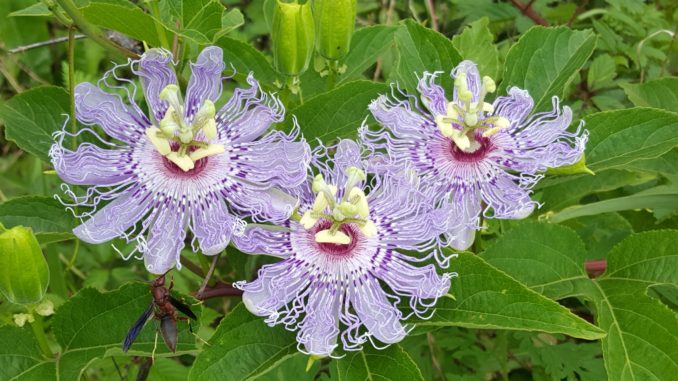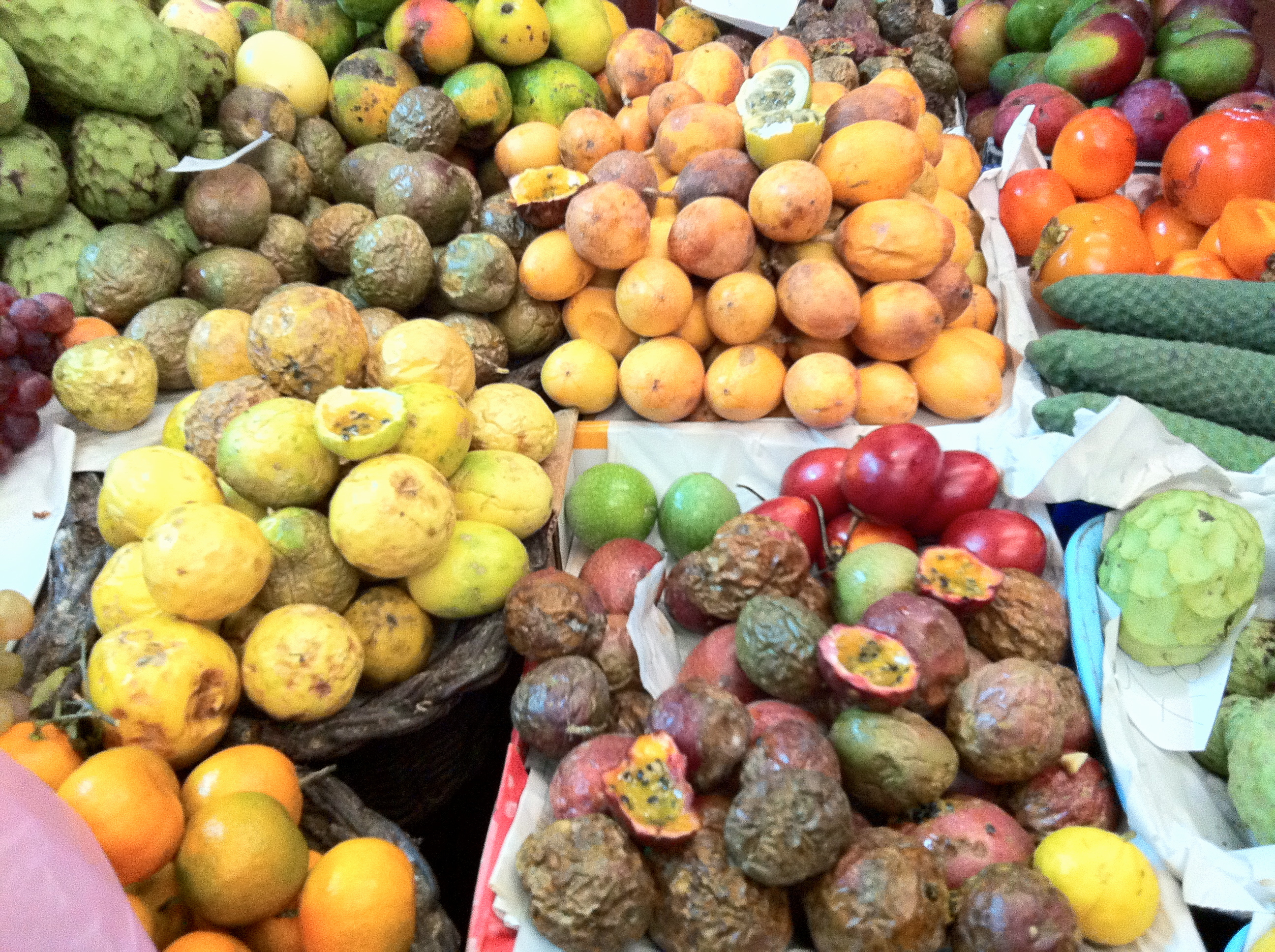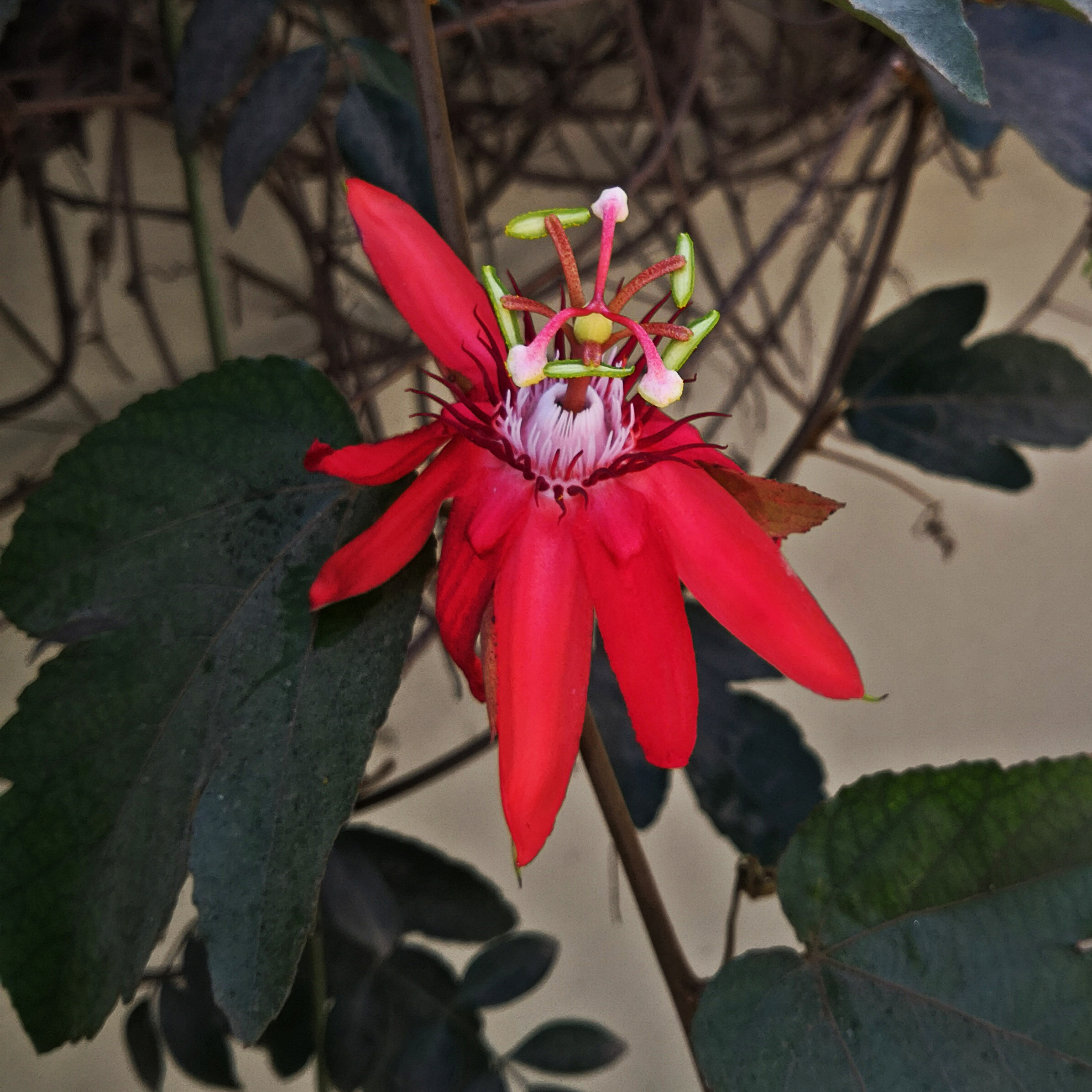
They look like flowers from an alien planet, and the fruit they bear conjur the image of pods meant to turn humans into alien-controlled pod people. There are at least 500 species of the genus Passiflora (commonly called passion flower or passion vine), and possibly as many as 550 species. However many there may be, they can vary wildly in appearance from one species of Passiflora to the next.

Passiflora are native to Central and South America, and to the southeastern United States, although they can be grown in any tropical climate around the world. Some species are subtropical, such as P. incarnata which is common in the US. The flower is a favorite of certain species of bees, butterflies, moths, and hummingbirds.

The fruit is edible and nutritious, although there are only a few varieties grown commercially for food. The most popular cultivars taste sweet and tart. Passion fruit is a great source of vitamin-A, beta-carotene, cryptoxanthin, vitamin-C, potassium, iron, copper, magnesium, phosphorus, and dietary fiber.

Funchal Public Market, by Andrew Nash.
The varieties of passionfruit that are widely cultivated and found in supermarkets fall into three main categories identified by their color when ripe; purple, yellow, and orange.

Photo by Fir0002/Flagstaffotos
Purple varieties are likely the most common passionfruit marketed in the world. The flavor and aroma is reportedly richer than the yellow varieties, and less acidic. They are grown as far north as California. Yellow passionfruit is bigger, produces higher yields, and more resistant to insects and disease. Orange passionfruit is much less common than purple or yellow varieties, but is said to have a superior flavor.

Passiflora has an ancient history in traditional medicine. Leaves of the plant are the main ingredient of an herbal tea (often referred to as sleepy time tea) taken as a sedative to help with insomnia. It’s also been shown to help ease anxiety.

Transplanting the passionflower is a challenge as the roots are delicate and deep. The plant can be mowed down, and the roots will survive to thrive again next year. Winter temperatures can drop down to well below freezing and the roots will survive to grow new vines in the spring. However, if you damage the roots you will kill the plant. In light of the sensitive nature of the roots, propogation from seed is most common but cuttings can also work.

Passion fruit is good for you, and they are believed to be native to planet Earth. Bottom line: Passiflora aren’t alien pod plants. As far as we know.
Question of the night: What’s your favorite flower? What’s your favorite fruit?
